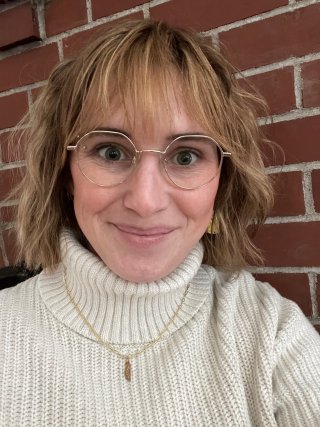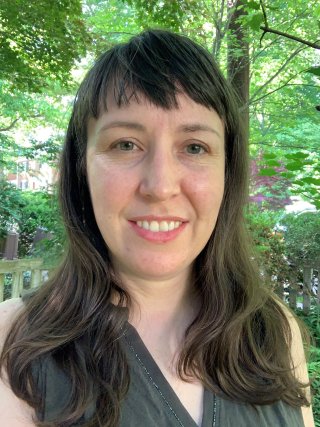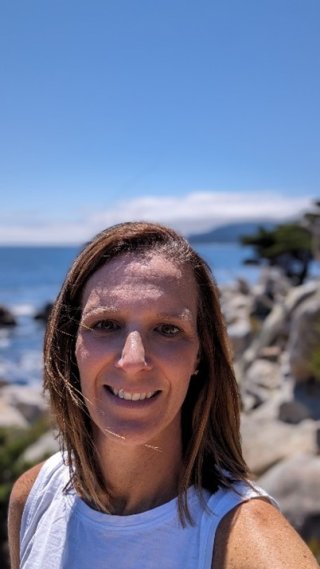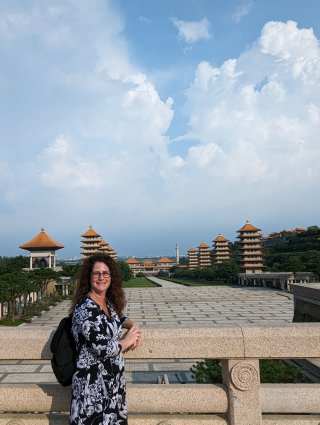Celebrating Women's History Month
Published March 19, 2024
March is Women’s History Month! Read about some of the women working in EPA’s Office of Research and Development to protect human health and the environment.

Maureen Gwinn, Ph.D., DABT, Principal Deputy Assistant Administrator and Chief Scientist for EPA’s Office of Research and Development
How does your work at EPA help protect public health and the environment?
My work as the Principal Deputy Assistant Administrator for Research and Development is focused on the development of the science needed to inform Agency (and partner) decision-making. The mission of the Office of Research and Development (ORD) is to provide the best available science and technology for protecting human health and the environment. Our work covers the breadth of topics important to environmental protection – addressing the impacts of environmental stressors (chemical and non-chemical) to human and ecological health following exposure through air, water and land. We are not just working to understand what is happening now, but to learn from it to avoid potential impacts in the future.
This means everything we do in ORD is to help develop the foundational science necessary to protect human health and the environment. I am fortunate to work with committed colleagues – including scientists, engineers, administrative professionals, computer and IT experts, lawyers, science communicators, facility managers, and a variety of other specialists—that believe in this mission as much as I do.
What was your most challenging experience in school or work and how did you overcome it?
This is not an easy question to answer. There are moments in your life that seemed like the biggest hurdle you will ever face, but then you conquer it and move on with (if you are lucky) increased personal strength.
To answer this, I’d have to say it was my first big career shift at EPA. I had been in ORD working on human health hazard assessments for about seven years. My background and experience at the Agency was largely focused on review and synthesis of toxicology and cancer research in order to develop human hazard assessments to support environmental decision-making. I was asked to shift gears to take on a leadership role in the Sustainable and Healthy Communities national research program focused on oversight of the public health research portfolio. Taking this detail on not only exposed me to an entire new aspect of ORD’s research portfolio, but also a new group of colleagues – most of whom worked in labs geographically distant from my office in Washington, DC. One of the great things about the EPA is the ability to try new things by taking on details – I highly recommend it! As one of my tasks was to better coordinate the public health portfolio with the ecological portfolio, it soon became apparent I had a steep learning curve to better understand the ecological research. I was faced with a four-month detail that was going to require a huge lift just to get up to speed – both in getting to know the science and the people, along with learning the actual job itself. I often questioned if I had made a huge mistake! So, what did I do? I thought about what I needed to succeed: hard work, good communication, supportive colleagues, and a strong mentor. I was lucky enough to have all of these, and I took the time to really understand the subjects and the colleagues I was working with on this project. My four-month detail extended to over two years, and this experience has always stuck with me when faced with what seems like an insurmountable challenge.
Do you have any advice for young people interested in careers like yours?
I often share key pieces of advice that I have learned through the years, either through my own experiences or from the wisdom of others.
Very rarely will you find someone who had a career path that was exactly as they planned when leaving school. Look to each opportunity as a step that you can learn from – even if what you learn is that it is not the step for you. These opportunities may be hard, but they are so often worth it. Even if it ends up not being the role for you, knowing that you are capable of taking on a challenge and succeeding will serve you well in the future.
And finally, I cannot stress enough the importance of mentors. They don’t have to be formal, you don’t have to meet every week, but have a sense of who you can call to help you work through any issues or big decisions and think about those that will be there to help you celebrate your achievements. I have mentors from a variety of periods of my life, each with a different focus, each with an immense value to me.

Kaytee Canfield, Ph.D., Social Scientist
How does your work at EPA help protect public health and the environment?
I am a social scientist with expertise primarily in inclusive science communication, tourism, and coastal environments. My work on the Translational Science Team in the Office of Science Advisor, Policy, and Engagement at the EPA is focused on finding ways to make our translational research more useful to people across the country. Translational research projects engage with partners, both within and beyond the agency, to identify priority environmental and public health problems and work collaboratively to find solutions that meet partners’ needs. For example, an ongoing project integrates agency researchers’ expertise and community knowledge to experiment with wastewater, aquaculture, and restoration techniques to manage water pollution from nutrients in coastal waterways. I look forward each day to finding ways to improve the usability of our work to better support all residents of the U.S. in tackling the complex environmental and public health problems we face in the twenty-first century.
What was your most challenging experience in school or work and how did you overcome it?
I was lucky and privileged to be in very supportive, inclusive, and largely women-led science programs throughout my education. Because I primarily felt I belonged in science through the examples of my teachers, professors, and colleagues, my most challenging school and career experience was finding where my passions could align to make a meaningful difference. This came up for me repeatedly through my time at university and early after finishing my doctoral work. As a self-identified geek, and a notorious introvert, many of the expected paths for “making a difference” didn’t quite fit with my personality and skillset. Finding my way to inclusive science communication research and practice in the final year of my doctorate was a game changer. Working closely with Sunshine Menezes and other leaders helped me find my place in this movement, working towards equity, inclusion, and justice in science and science communication. Inclusive science communication has been central to both my career and personal evolution, in finding ways I can be my full self and create a positive difference within academic and research environments.
Do you have any advice for young people interested in careers like yours?
Give yourself space and grace to grow, expect challenges, find a mentor you trust, and ask questions. I started college in chemical engineering with a goal of creating truly biodegradable plastic. While I miss calculus (see, I said I’m a geek), I’m so happy with the qualitative, environmental, and inclusive science communication career in which I’ve landed. When I leaped into environmental social science, it felt like I was disappointing the women in science and engineering before me and taking the easier path. In my first environmental studies course, I found my first mentor, Dr. Kristen Weiss, who introduced me to qualitative social science, social network analysis, and science communication, and reminded me that social science is indeed science. While I’m still relatively early in my career, I have many people to be grateful to for the way they’ve helped grow my confidence and sense of belonging in my career and field. Ask those people who help you feel you belong lots of questions, and don’t hesitate to come back with more. They are happy to help you find where you belong, and I would be happy to help you, too.

Rebecca (Becky) Nachman, Ph.D., Epidemiologist
How does your work at EPA help protect public health and the environment?
My work as an epidemiologist helps us to understand how chemicals in the environment impact the health of people. Much of the evidence I work with comes from observational studies, which means the people in the studies were not intentionally exposed to anything. Instead, researchers use creative methods to determine whether some people are more exposed to a chemical than others and whether the rates of disease are different between different groups of people depending on their exposure level. This kind of evidence adds an important dimension to EPA’s risk assessments, which are used to make decisions about regulations like water and air standards, because epidemiology evidence shows what is happening in a real-life scenario with real people. I enjoy the challenges of interpreting epidemiologic evidence, but I especially like knowing that the work I do contributes directly to protecting people’s health.
What was your most challenging experience in school or work and how did you overcome it?
My greatest challenge was taking the research that I conducted over a period of years as a doctoral student and describing it clearly in a paper for publication. When you spend a lot of time thinking about a problem, all of the details and how they fit together become very familiar to you. You have become an expert in something, but the results of your research only have an impact if they can be communicated to others. Doing scientific work often involves working with a lot of information and complex ideas, but in the end, it is the scientist’s responsibility to communicate the purpose of the research, how it was done, what the results were, and how those results advance what we knew before the research was conducted. Scientific journals often have a limit on the number of words allowed in a single article, which makes doing this all the more challenging. However, I find that it is when we are working within limitations that we often do our greatest work.
Do you have any advice for young people interested in careers like yours?
My advice to young people is to keep trying new things, keep taking action. If you talk to me or any of my colleagues, many of us did not know that we would someday be scientists working at EPA when we were first starting our careers. Some of us started in careers that seem unrelated. For example, before I went to graduate school, I studied English and worked for several years as an editor in a publishing house. Young people should know that at every step they take, they will gain skills that they may apply in ways they never imagined, and they will learn something about themselves and where they want to go next.

Lindsay Stanek, Ph.D., Physical Scientist
How does your work at EPA help protect public health and the environment?
My research, as well as that of my branch (the Exposure Indicators Branch), is focused on human exposure to environmental contaminants and microbes. I am very interested in understanding the many determinants of exposure that influence where and when we come into contact with chemicals in our everyday lives. It is critical to recognize the importance of place in a person’s overall exposure, while acknowledging that many environmental issues are common across the country; yet every community is unique in its combinations of exposures and the actions that could mitigate them. My most recent projects have been focused on lead (Pb) and whether we can use surrogates of exposure to predict where children may be affected by Pb in their homes and neighborhoods.
What was your most challenging experience in school or work and how did you overcome it?
There have been a few times where my motivation was questioned that was in direct opposition with a main value of mine – integrity. In each case, after the initial exchange, I took some time to reflect and work through my response, so it would be less emotional. From those early career experiences, I’ve learned to be open and transparent in sharing my rationale for making decisions.
Do you have any advice for young people interested in careers like yours?
My biggest piece of advice is to take advantage of opportunities presented to you and to put yourself out there. There were many times throughout my career where others saw potential in me and gave me the encouragement I needed to step into roles that were outside of my comfort zone. Through doing things that stretched my knowledge and training, I realized that I brought unique perspectives and experiences that were just as valuable as my credentials.
Emily Trentacoste, Ph.D., Biologist

How does your work at EPA help protect public health and the environment?
One of my favorite parts about working at EPA is that every person makes a difference in supporting our Agency’s mission. Since joining EPA, I’ve worked in several different roles across the Agency, including writing rules for wastewater in the Office of Water and directly working with states and communities in the Chesapeake Bay Program to help them use science to curb nutrient and sediment pollution. Since joining ORD, I’ve worked to support ORD’s leadership. In my current role, I feel I’m protecting public health and the environment by helping to ensure EPA’s and our partners’ decisions are supported by the best available science. I love being able to support ORD researchers at a high level across all our organization and communicate the great work we do.
What was your most challenging experience in school or work and how did you overcome it?
My most challenging experience in school or work was the “imposter syndrome” I felt while in my first year of graduate school. I had just come from undergrad into a PhD program, and although I had done well in research in school previously, I had never done it as independently. My first year I felt like I was doing everything wrong, I wasn’t producing anything, and so I must not deserve to be there. But I continued to work hard, build skills, and learn as much as I could, and I quickly became confident in myself, my knowledge, and my abilities. Although the experience was challenging, it made me a better researcher.
Do you have any advice for young people interested in careers like yours?
Yes, two pieces of advice! The first is to talk to people. You can find out so much information about different types of careers within the fields of environmental science, research, and protection by just talking to people in different positions. There are more options out there than you might think. Don’t be afraid to contact someone you’ve never met to talk to them about what they do. The second is to approach every position in your career as an opportunity, even if it’s not where you want to ultimately want to end up. If you find yourself in a position that you know you’ll want to move on from eventually, work hard at whatever skills or experience you can build while you’re in it, and remember that discovering what you don’t want from your job can be equally as helpful as discovering what you do want.

Nicolle Tulve, Ph.D., Research Physical Scientist
How does your work at EPA help protect public health and the environment?
My work is focused on understanding the links between chemical and non-chemical stressors and how those interactions may affect our health, well-being, and quality of life. Fundamental to my research is a strong interdisciplinary background and training, and within that background the field of exposure science. Exposure science is fundamental to our research because it is everything that we are exposed to and how those exposures occur, when they occur, and how all these stressors interact that influence our health, well-being, and quality of life. My research is primarily focused on children’s environmental health, but what we learn about protecting children’s health is applicable to all humans. It has been very exciting to work on Agency priority research throughout my career.

What was your most challenging experience in school or work and how did you overcome it?
Gosh, there have been so many challenges throughout my career. One of the biggest challenges I faced was being one of only a couple of women in my graduate school program. I am an environmental engineer by training, and breaking through those barriers and graduating with high honors took a lot of perseverance, strength, and thick skin. That thick skin has served me well throughout my career.
Do you have any advice for young people interested in careers like yours?
Learn as much as you can and keep learning. I truly believe that the most pressing issues of our current society can only be solved through interdisciplinary collaborations. And always recognize when you need others to help work on a problem and seek them out.
Editor's Note: The opinions expressed herein are those of the researcher alone. EPA does not endorse the opinions or positions expressed.
